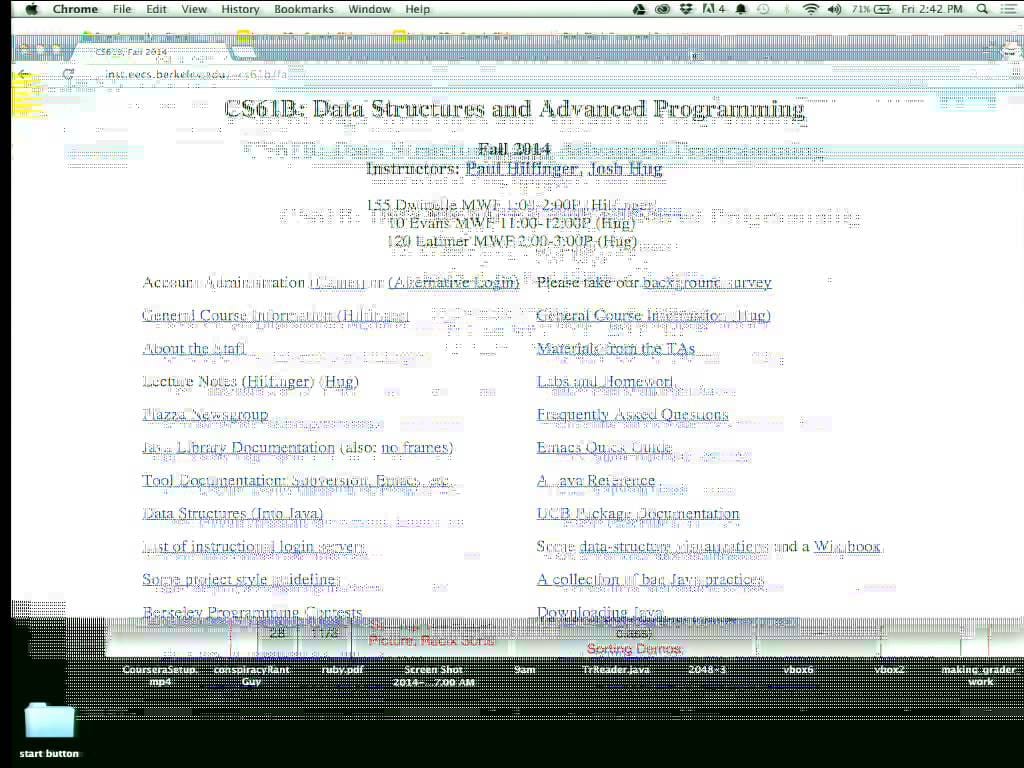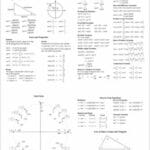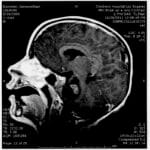This guide provides comprehensive information about UC Berkeley’s CS 61B, equipping you with the knowledge and resources to excel in this challenging yet rewarding course. Whether you’re a curious beginner or an aspiring expert, this guide will help you navigate the world of data structures and algorithms.
Decoding CS 61B: Content and Skills
CS 61B, focusing on Data Structures and Algorithms, is a pivotal course in computer science education, laying the foundation for advanced studies and career success. Think of it as constructing your programming toolkit, filled with essential instruments you’ll consistently utilize throughout your computer science journey. It builds upon the foundational programming concepts introduced in CS 61A, making it highly recommended to take 61A first. CS 61A provides the necessary grounding in programming logic, recursion, and object-oriented programming, preparing you for the complexities of 61B.
This course emphasizes practical application using Java. While the specific language is Java, the core concepts of data structures and algorithms transcend individual programming languages, making the knowledge gained in CS 61B highly transferable.
Exploring Data Structures: The Building Blocks of Code
Data structures are the fundamental components for organizing and storing data efficiently within a program. CS 61B introduces you to several essential data structures:
- Arrays: Ordered collections of elements, accessible by their position. Imagine a numbered list of items.
- Linked Lists: Sequences of nodes, where each node points to the next. This allows for efficient insertion and deletion of elements.
- Trees: Hierarchical structures, like a family tree, enabling efficient searching and sorting.
- Graphs: Representations of connections between objects, like a social network, useful for modeling relationships and pathways.
- Hash Tables: Structures that allow quick data retrieval based on keys, analogous to a dictionary.
Mastering Algorithms: The Recipes for Computation
Algorithms are the step-by-step procedures that manipulate data, providing solutions to computational problems. CS 61B covers key algorithms for:
- Searching: Locating specific information within a dataset.
- Sorting: Arranging data in a specific order.
- Graph Traversal: Navigating and exploring graph structures.
Essential Resources and Community Support
CS 61B offers a wealth of resources to support your learning:
- Archived Course Materials: Past course websites, such as the Spring 2021 site, are invaluable resources. They often contain lecture notes, assignments, and practice exams. Exploring these resources can provide additional context and practice materials.
- Online Communities: Connecting with other students through online forums or discussion groups like the courseforum offers invaluable support. Sharing tips, asking questions, and collaborating with peers can significantly enhance your learning experience.
Future Pathways: Careers and Further Learning
The skills acquired in CS 61B open doors to diverse career paths:
- Software Engineer: Designing, building, and maintaining software applications.
- Data Analyst: Extracting insights from data to inform decision-making.
- Machine Learning Engineer: Developing algorithms that enable computers to learn from data.
After mastering the fundamentals in CS 61B, you can explore more specialized areas like advanced algorithms, machine learning, or artificial intelligence. A Masters in CS and Data Science, like the one offered by the University of York, could be a potential pathway for further study.
Prerequisites: Preparing for CS 61B
While the formal prerequisites for CS 61B are CS 61A or ENGIN 7, practical programming experience is highly recommended. These prerequisite courses equip you with foundational knowledge in programming logic, recursion, object-oriented programming, and basic data structures.
Prior coding experience, even through personal projects, can greatly benefit you. The fast-paced nature of CS 61B builds upon these fundamental concepts rapidly, and prior experience will make the transition smoother and facilitate a deeper understanding of the material. This hands-on experience will be especially helpful when working with Java in CS 61B.
Here’s a summary of the prerequisites:
| Prerequisite | Importance | Description |
|---|---|---|
| CS 61A or ENGIN 7 | Required | Introduces fundamental programming concepts, including logic, recursion, object-oriented programming, and basic data structures. |
| Practical Programming | Highly Recommended | Any coding experience outside of coursework, personal projects, etc. strengthens your foundational skills. |
What is CS 61B About? A Deeper Dive
CS 61B delves into the core of computer science, exploring how we structure and manipulate data to solve complex problems. This course assumes a basic understanding of programming, building upon concepts introduced in CS 61A.
The course uses Java as the primary language, but the focus is on applying Java to understand broader concepts of data structures and algorithms. You’ll learn how to choose the most effective data structures and algorithms for different situations, optimizing program performance.
CS 61B covers three main areas:
| Concept | Description | Example |
|---|---|---|
| Data Structures | How to organize and store data efficiently. | Arrays, Linked Lists, Trees, Hash Tables |
| Algorithms | Step-by-step procedures for solving problems and manipulating data. | Sorting algorithms, Searching algorithms |
| Software Engineering | Principles and practices for designing, developing, and maintaining high-quality software. | Testing, Debugging, Code Style |
The importance of CS 61B lies in its provision of foundational knowledge crucial for advanced computer science studies and software engineering roles. It enhances problem-solving abilities and fosters critical thinking, valuable skills in various fields. The course might also introduce you to some ongoing research in the field, sparking your curiosity for future exploration.
It’s important to remember that computer science is a dynamic field. While CS 61B provides a strong foundation, ongoing research continually evolves our understanding of data structures and algorithms. The course equips you with the adaptability to navigate these changes and continue learning.
Is Computer Science a BEng? Clarifying Degree Classifications
The classification of computer science degrees as BEng (Bachelor of Engineering) or BSc (Bachelor of Science) can vary across universities.
While most computer science degrees are awarded as a BSc, focusing on the theoretical underpinnings of computation, some universities offer BEng programs in computer science or related fields like software engineering. These BEng programs typically emphasize practical application and hands-on engineering, often bridging the gap between theory and practice.
When considering a computer science degree, it’s essential to research specific programs and their curricula. Don’t just focus on the BSc or BEng label; delve into course descriptions to understand the program’s philosophy and emphasis on theory versus practice. Consider your career goals, learning style, and interests when making your decision.
- Coupa Cafe: A Silicon Valley Taste of Venezuelan Tradition - November 15, 2024
- The Durands: A Legacy Forged in Tin, Ritual, and Music - November 15, 2024
- Coughlin Porter Lundeen: Seattle’s Leading Civil & Structural Engineering Firm - November 15, 2024













